-
Posts
3,697 -
Joined
-
Last visited
Content Type
Profiles
Forums
Gallery
Events
Articles
Posts posted by elverno
-
-
You have a good eye.
 Yes, the Caroline was in one of the PCI's and did pretty well. I'm re-photographing my entire collection. This has the dual purpose of keeping me from spending all of my money on coins and medals and improving my picture taking skills at the same time. Just the process is teaching me all the things I didn't know to ask...
Yes, the Caroline was in one of the PCI's and did pretty well. I'm re-photographing my entire collection. This has the dual purpose of keeping me from spending all of my money on coins and medals and improving my picture taking skills at the same time. Just the process is teaching me all the things I didn't know to ask... 
-
1808 Avoués de Villefranche, France
Bramsen 815
d'Essling 2375
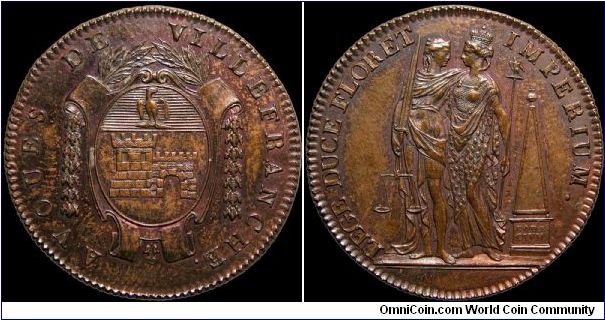
32mm Link
This is a lawyer's token. The women represent Justice and France respectively. The oddly beautiful toning I believe is the result of an old lacquer job.
-
1808 Loge des Arts réunis à Rouen, France
Bramsen 832
Edwards 446
Marvin XCIII
d'Essling 2293
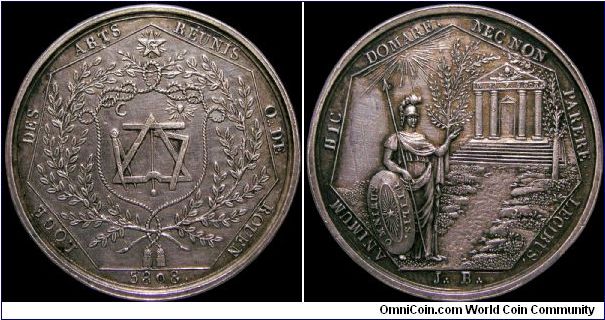
31mm Link
These are reimages of the masonic medals I put into a previous thread.
1808 Loge des Cœurs unis, France
Bramsen 829
Edwards 443
Marvin CXLVII
d'Essling 2127
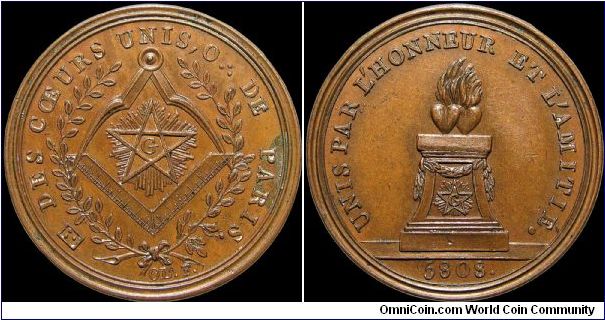
27mm Link
1808 Loge d'Isis, France
Bramsen 828
Edwards 442
d'Essling 2126
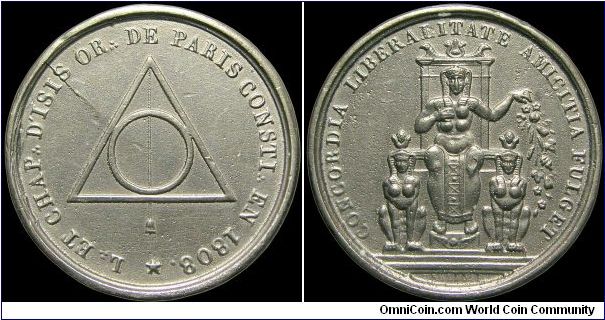
27mm (tin) Link
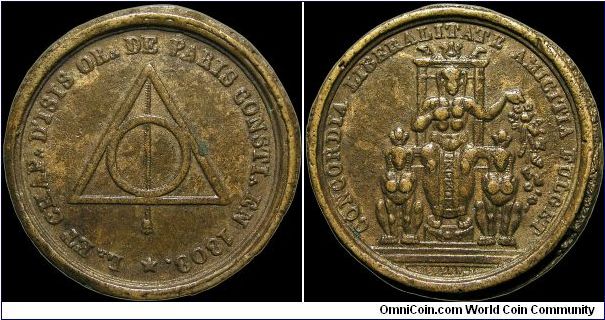
27mm (bronze) Link
The engraver Merlen's work was often cast rather than struck and this medal is an example. The copper or bronze piece may be a cast copy considering the crudeness of the work compared to the tin.
-
-
1808 La Reine de Naples, France
Laskey CXL
Bramsen 772
d'Essling 2543
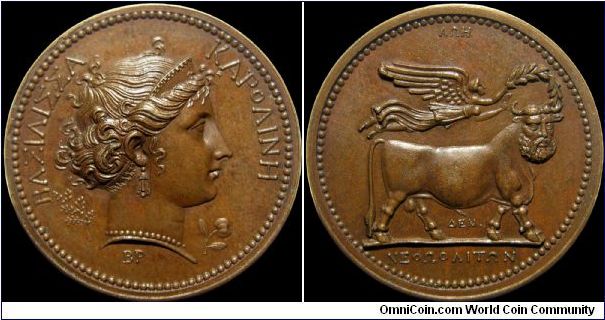
22mm Link
In 1808 and later in 1813 there were a series of medal mint visitation medals produced featuring Napoleon's sisters, wife and step-daughter. I've called the series "The Ladies".

1808 La Princesse Pauline, France
Laskey CXXXIX
Bramsen 770
d'Essling 2548
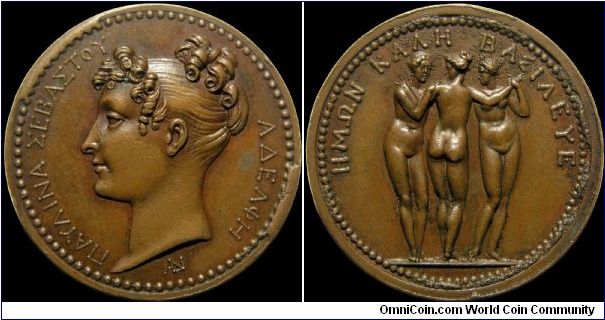
22mm Link
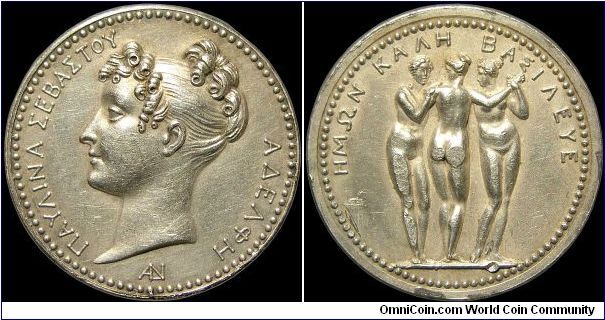
22mm Link
1808 La princesse Pauline visite la Monnaie des médailles, France
Bramsen 771
d'Essling 1219
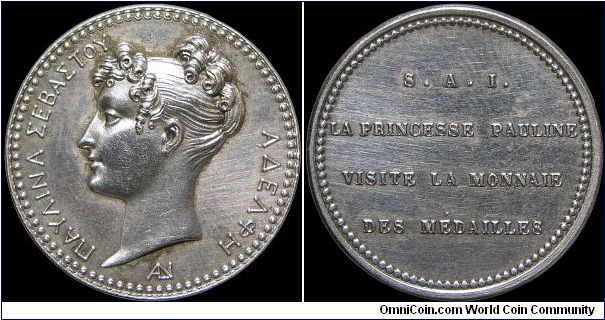
22mm Link
Pauline was Napoleon's favorite sister though she drove him nuts with her crazy behavior. But she was loyal until the end, gave him her jewels and offered to join him in exile. If you examine the two examples closely they were clearly struck from two different dies.
1808 Hortense, Reine de Hollande, France
Bramsen 767
d'Essling 2438
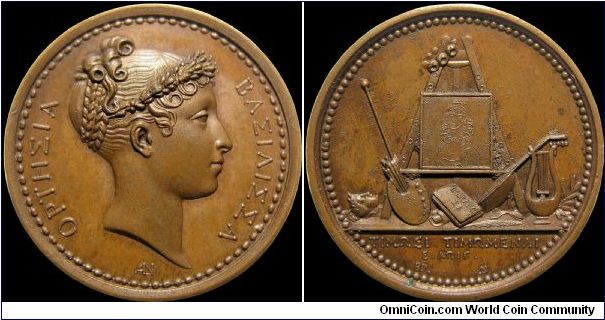
22mm Link
Hortense was Napoleon's step-daughter and later his sister-in-law. Though British propaganda tried to make their relationship into an incestuous one there is no evidence that he ever regarded her as anything except his daughter.
1808 La Reine Hortense, France
Bramsen 769
Laskey CXLI
Edwards 394
d'Essling 1218
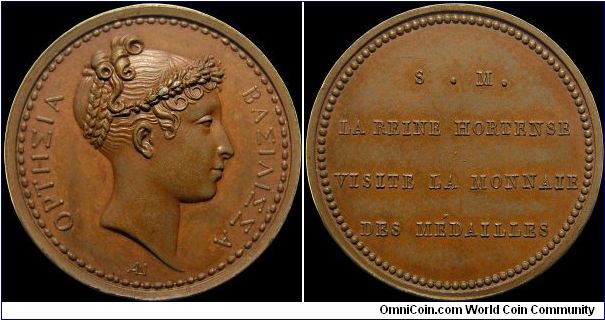
22mm Link
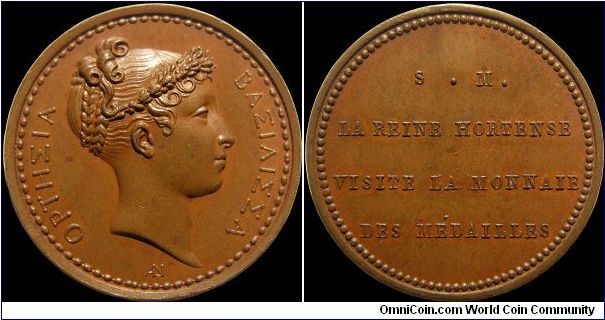
22mm Link
On the occasion of the Queen's visit to the medal mint.
1808 La princesse Elisa visite la Monnaie des médailles, France
Bramsen 776
Edwards 396
d'Essling 1221
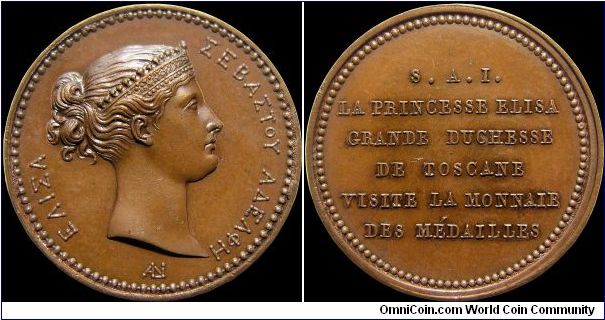
23mm Link
While she was a princess of France Napoleon only saw fit to give sister Elisa a Grand Duchy. She was furious.
-
Wonderful stuff, keep 'em coming!

-
-
Beautiful examples. Are they aluminum? And nicely researched. It's easy to forget that Hitler was an elected official.
-
1790 1 Pfennig, Frankfurt.
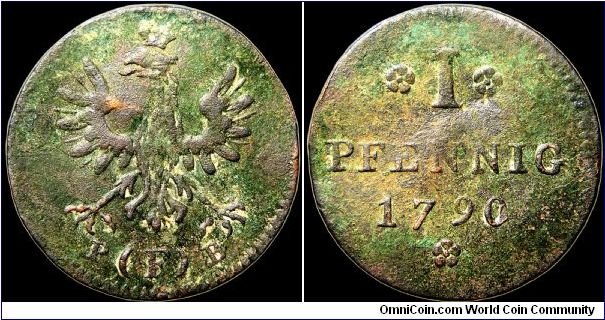
21mm
-
For me cheap is less than $20. Most of the coins I collect fall into that category because I'm more than happy to give a well circulated coin a new home. The medals need to be less than $150 for me to think they're cheap. It used to be that $150 would buy me 8-10 medals and the dealer would toss another in just so he didn't have to take it home. I think that for a while there couldn't have been more than a couple dozen serious Napoleonic medal collectors anywhere. Ah the good old days...
-
1815 2 Grote, Oldenburg
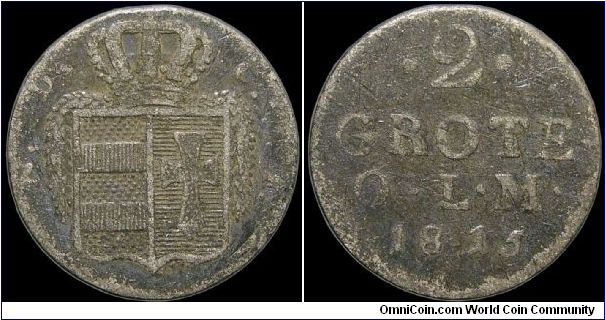
12mm
-
1809 1/6 Thaler, Westphalia.
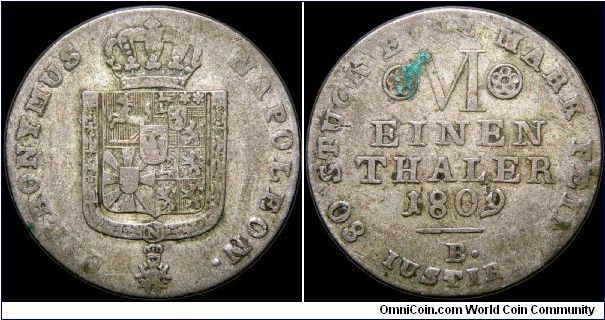
Another duplicate frankly from a lot and not an upgrade. The neon green doesn't appear to be PVC damage under a loupe but I've been wrong before.
-
Thanks Marvin. I was very surprised to see how nice that 1818 was. It was just buried in a lot that I was after to fill some holes.
-
Thanks, I like it too but I'm probably going to find it a new home. You want it Tiff?
Also in today:
1806 1/48 Thaler, Saxony.
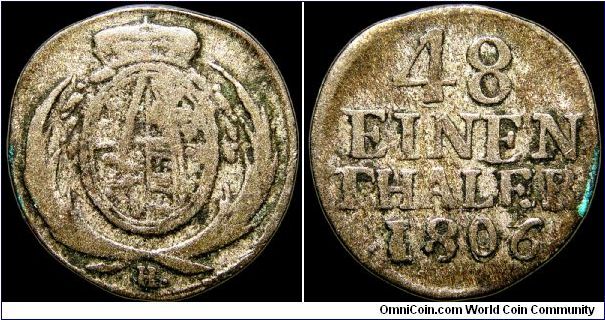
This was one I was actually bidding on believe it or not... as well as this one:
1810 1/6 Thaler, Saxony.
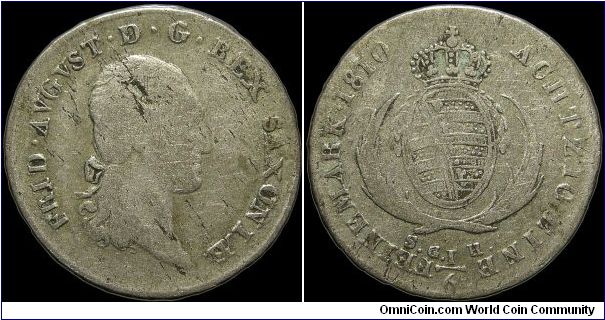
-
1818 1/12 Thaler, Saxony.

Not a year I normally collect but it came in a lot.
-
1808 20 Kreuzer, Austria.
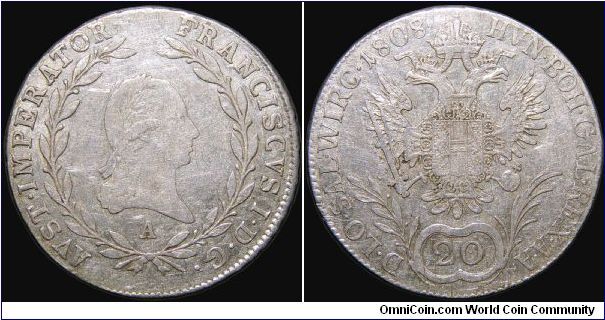
From the Vienna mint.
1927 5 cents, United States.
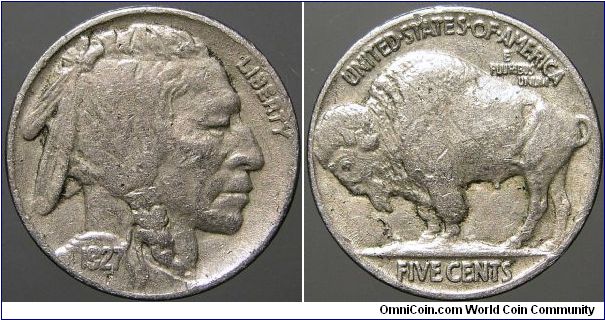
-
Yeah, it has to be just about the ugliest eagle ever!

-
1808 10 Soldi, Napoleonic Kingdom of Italy.
Milan mint, mintage 174,948.
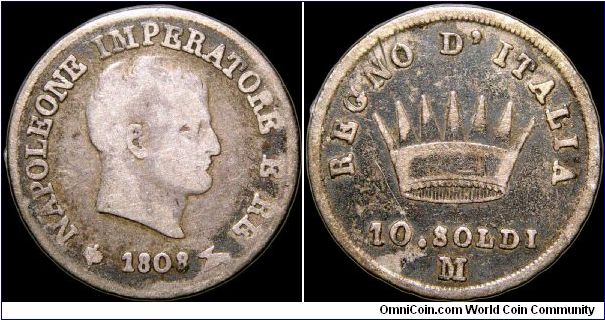
Hard to believe, but an upgrade. I'm still looking...

-
1791 12 Heller, Aachen.
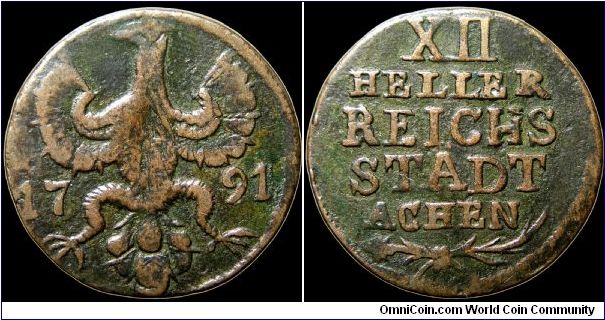
-
1798 1 Kopek, Russia.
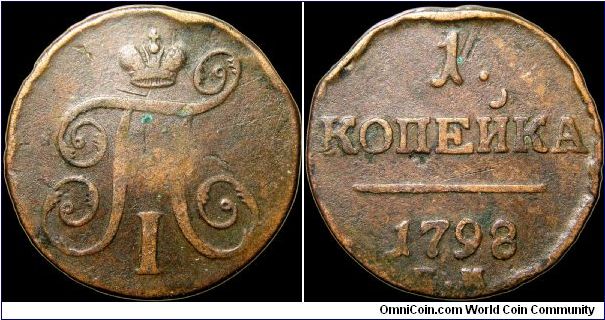
Fills a hole at least.

-
Today's mail had this upgrade from a filler:
1814 Thaler, Prussia.
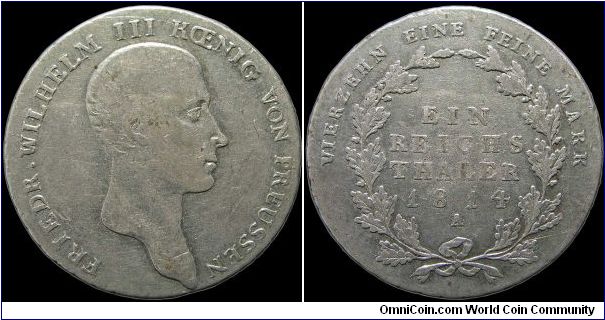
-
Thanks Art, I appreciate it. Of course the period I collect virtually everything in AU costs a small fortune.

Another came in today as well:
1802 Comptoir commercial, France.
Bramsen 240
Julius 1121-1122
d'Essling 2060
Milan - 374
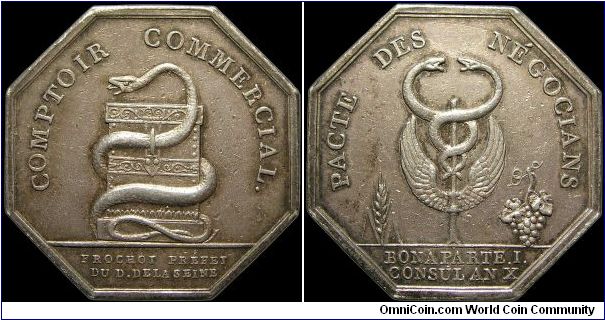
A jeton de presence for an organization in Paris. An X is roughly 1802-1803.
-
1808 3 Kreuzer, Wurzburg.
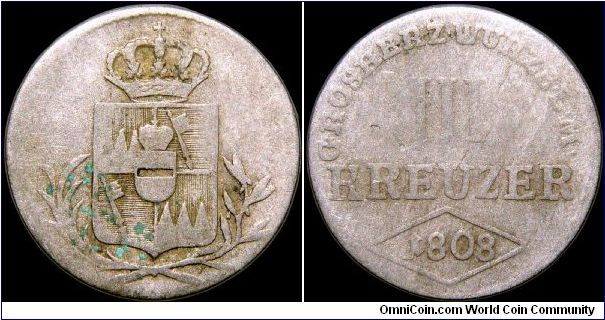
Only my second coin from this country. Neither is particularly good but heck, I'm cheap!
-
1 ½ Pfennig, Saxe - Weimar - Eisenach.
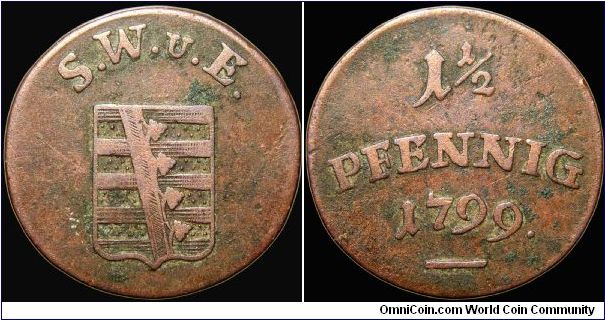
The first of this denomination and country I've collected.

Well, I've got others from SWE but I meant the first 1 ½ pfennig from there...


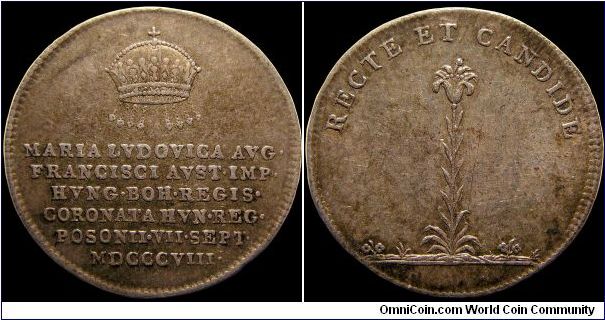
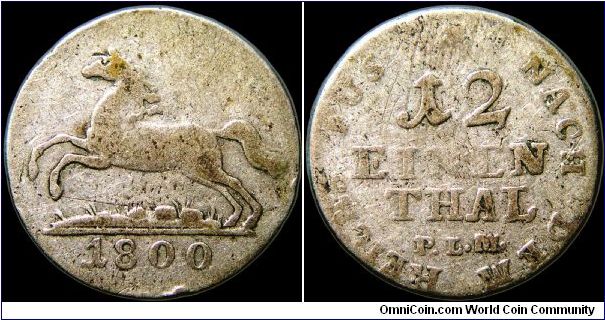
1808
in Exonumia (Tokens, Medals, etc) Forums
Posted
1808 Bataille de Sommo-Sierra, France
Laskey XCVI
Bramsen 756
d'Essling 1216
41mm Link
This is a medal with two great stories attached to it. One is numismatic. This is a plain-edged medal. Normally, in terms of a First Empire medal, that means it is an original strike. However, this one was struck nearly thirty years later. The clue is in the engraving in the reverse. Bramsen, who was as expert as anyone on the subject of Napoleonic medals, has a note at the end of his description. But he was wrong. Here's how I put it on my site when my good friend David Block let me know I had a restrike:
"Fortiter's research indicates:
"Bramsen, following Fellmann in the Tresor claims that the JEU. signature is apocryphal, that the die was actually cut by Brenet. Bramsen either did not read or did not understand the entry in the French mint catalog of 1892, which explains that the die by Jeuffroy was first used in England after 1815, that Brenet copied the die for the French mint (adding his signature to that of Jeuffroy). Thus French strikes will bear both signatures and date from after 1830."
Thus, my example is one that illustrates a medal struck in the 1830-1842 period. At this time the edges of copper and bronze medals were plain-edged. Only research of the type indicated can definitely identify such a medal as opposed to an original pre-1815 strike."
The second story is on the subject of the medal itself. I quote myself:
"Sommo Sierra was the site of some of the greatest bravery exhibited during the Napoleonic Wars. Napoleon was determined to capture Madrid and the Spanish Junta equally determined that he shouldn't get there without a fight. In his hurry to cross the Somosierra pass Napoleon neglected to properly assault the 16 cannon mentioned by Laskey and he began to get bogged down. Annoyed, he turned to Captain Korjietulski (or Kozietulski), commander of the Third Squadron of the Polish Light Horse, who were the current escort for the Emperor, and ordered them to take the position at the gallop. In a near suicidal charge, lasting only seven minutes, nearly 70% of the squadron became casualties. Actually, different authorities have different numbers involved and casualties suffered. One says 60 of 88 who charged (approx. 70%) while another says 82 of 150 (55%).
Napoleon leaned over the bleeding body of Lt. Niegolewski who had captured a battery of guns with his troop and, removing his own cross of the Legion of Honor, pinned it on him.
Forty-seven years later the Lieutenant would write, "would that many a youth might live to see such a day!"
A second charge by two remaining squadrons was executed as part of a correctly coordinated attack on the position. With minimal losses the cannon were all captured. Napoleon typically failed to mention the first charge in his bulletin of December 2nd, 1808 but there is evidence that he never forgot the Poles' bravery and sacrifice.
Napoleon later would award sixteen crosses of the Legion of Honor, ending the ceremony by taking off his hat and crying, "You are worthy to belong to my Old Guard. Honor to the bravest of the brave!""